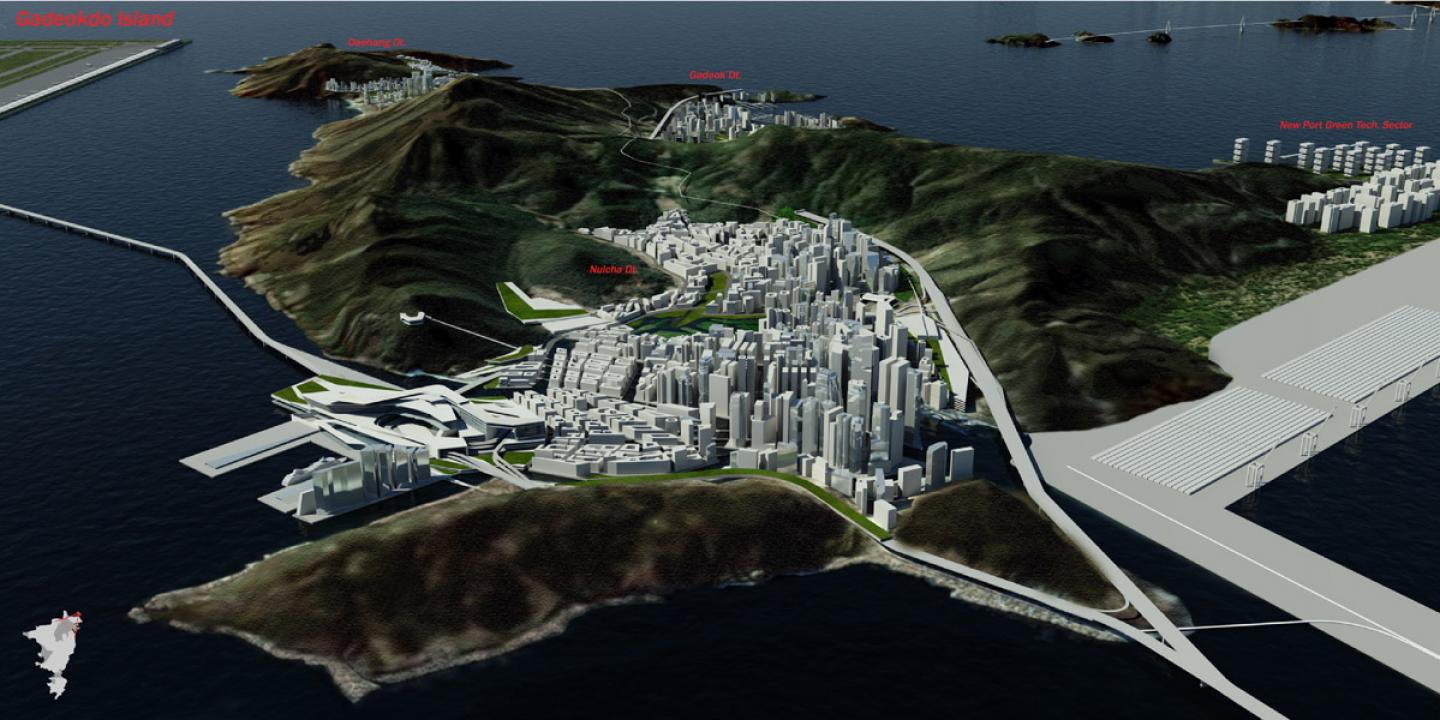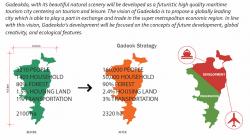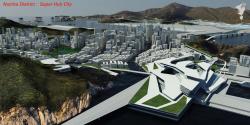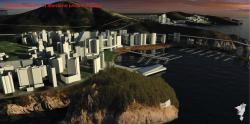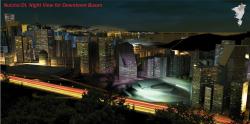LIFE ON THE SUPER EDGE: BUSAN HUB CITY------
The Nulcha Bay district of Gadeokdo island assumes the role of the region’s premier super hub, becoming the chief linchpin in an ever growing urban network of Greater Busan. Taking cues from the regional logistic strategy, the construction of new port, and the intended placement of a new airport, the super hub concept builds a case around Gadeokdo’s opportunity to synthesize not just air and sea traffic, but all regional traffic- traffic which is then woven into not only a sustainable development but a sustainable cohesive city region.
The island itself is naturally divided into four zones (Nulcha, Gadeok, Daehang, and the New Port Green Technology Sector) and is linked by a central node that controls access and facilitates sustainable activities. Consequently, the new Gadeokdo exhibits a self similarity, a microcosm, of the surrounding collection of cities with shared interest.
A key attribute of how the island functions at the human scale is its approach to “walkability” or creating a pedestrian friendly environment within such a dense urban context. Nulcha being the key access point for incoming traffic, a clean infrastructure exists to then access the variety of regions on the island in many different ways (electric buses, walking, hiking, boating, trams, etc.). Consequently, the carbon footprint of the built environment is dramatically reduced and the ecological impact on the island is minimal. With wetlands restoration, forest reserves, riparian corridors, artificial reef creation in the ocean, and added park space on roofs- the aim is to add more ecologically than what is taken away.
As a super hub, the regional emphasis on Gadeokdo as a central node- like a heart in an organism- provides a welcoming narrative for those traveling to Busan or elsewhere in the region and a maximizes the layover experience by its ease of access. Furthermore, a world class resort in Daehang, the ubiquitous hiking trails and outdoor activities already present, a maritime leisure capital in Gadeok, the potential for further development, business and industrial location conveniences, and the retained historic sites (Lighthouse, Korean War Memorial, wildflower preserve, etc.) all provide a myriad for draws for not only the itself but for the adjacent region. In effect, this concept supplies a catalyst for economically invigorating Greater Busan.
2010
The central canal area of the Nulcha district is built on reclaimed land. This minimizes the amount of excavation necessary and allows a system of prefabricated concrete parking structures and tunnels to be laid under the buildings. Above the road network runs a series of canals which connect the islands by waterbuses and water taxis. At the surface level are pedestrian only streets as well as wider roads dedicated to electric city buses. This efficient system of infrastructure will keep Nulcha cleaner, quieter and more pedestrian friendly.
Sang Dae Lee, Ashley Coon, Joshua Howell, Xin Li
Favorited 1 times
